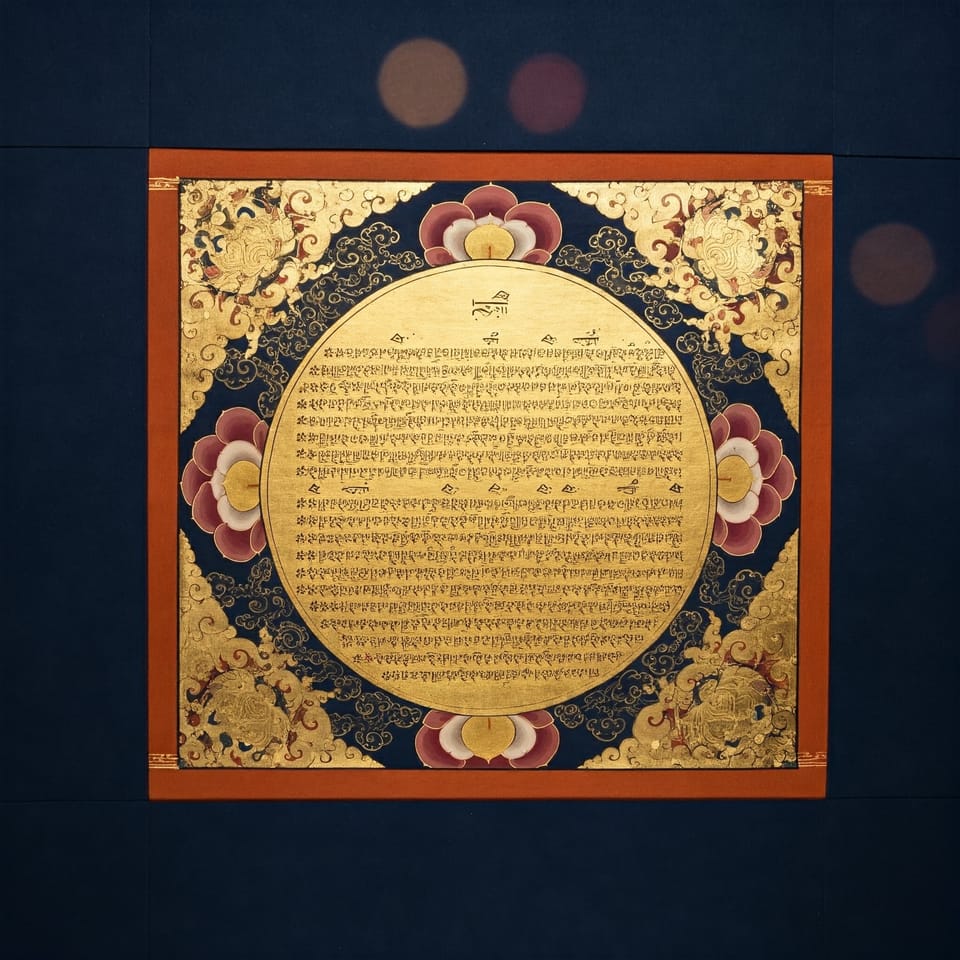Buddhism - Significance of the Shakyamuni Buddha Mantra in Buddhist Practice

ॐ मुनि मुनि महामुनि शाक्यमुनिये स्वाहा।
"Om Muni Muni Mahamuni Shakyamuniye Svaha."
In Buddhist tradition, mantras are sacred sounds or phrases that carry spiritual significance, often used in meditation and chanting to focus the mind and invoke specific qualities or energies. The mantra "ॐ मुनि मुनि महामुनि शाक्यमुनिये स्वाहा" ("Om Muni Muni Mahamuni Shakyamuniye Svaha") is dedicated to Shakyamuni Buddha, the historical Buddha, and is a powerful tool for practitioners seeking wisdom and liberation. Here’s an exploration of its meaning and purpose:
- "Om Muni Muni Mahamuni Shakyamuniye Svaha" - This mantra can be broken down as follows:
- Om: A sacred syllable representing the primordial sound of the universe, symbolizing the essence of ultimate reality or consciousness.
- Muni: Means "sage" or "silent one," referring to the Buddha's wisdom and meditative stillness.
- Muni Muni Mahamuni: Repeats "Muni" to emphasize the greatness ("Mahamuni" means "great sage") of Shakyamuni, highlighting his supreme wisdom and enlightenment.
- Shakyamuniye: Refers specifically to Shakyamuni, the "Sage of the Shakyas," the historical Buddha who attained enlightenment under the Bodhi tree.
- Svaha: A concluding word often used in mantras, signifying an offering or dedication, akin to "so be it" or "may it be so," directing the energy of the chant towards its intended purpose.
- Purpose of the Mantra - The chanting of this mantra is a way for Buddhists to connect with the wisdom, compassion, and enlightened qualities embodied by Shakyamuni Buddha. It serves as a meditative practice to focus the mind, cultivate inner peace, and seek guidance on the path toward enlightenment and liberation from suffering (Nirvana). By invoking the Buddha’s name and essence, practitioners aim to align themselves with his teachings (the Dharma) and the path to awakening.
- Spiritual Significance - This mantra is not just a verbal recitation but a profound practice of mindfulness and devotion. It helps practitioners internalize the qualities of the Buddha, such as clarity, compassion, and insight, while also reminding them of the potential for enlightenment within themselves. The repetition of the mantra can also serve as a means to purify negative karma and overcome obstacles on the spiritual journey.
This mantra, like many in Buddhism, is a bridge between the practitioner and the enlightened state, encouraging a deep connection with the timeless wisdom of Shakyamuni Buddha. It is often chanted during meditation, rituals, or personal practice, fostering a sense of unity with the Buddha’s teachings and the universal quest for liberation.